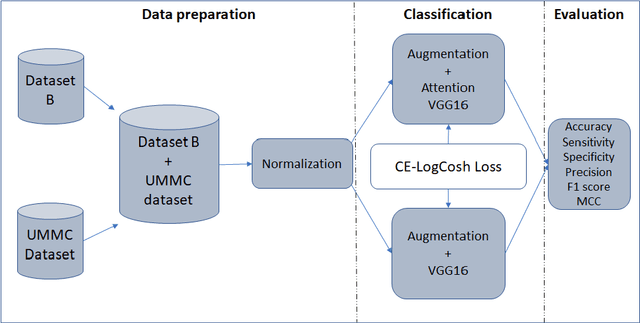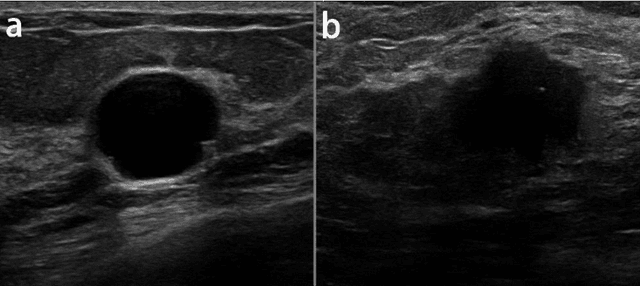Classification of Breast Cancer Lesions in Ultrasound Images by using Attention Layer and loss Ensembles in Deep Convolutional Neural Networks
Paper and Code
Feb 23, 2021



Reliable classification of benign and malignant lesions in breast ultrasound images can provide an effective and relatively low cost method for early diagnosis of breast cancer. The accuracy of the diagnosis is however highly dependent on the quality of the ultrasound systems and the experience of the users (radiologists). The leverage in deep convolutional neural network approaches provided solutions in efficient analysis of breast ultrasound images. In this study, we proposed a new framework for classification of breast cancer lesions by use of an attention module in modified VGG16 architecture. We also proposed new ensembled loss function which is the combination of binary cross-entropy and logarithm of the hyperbolic cosine loss to improve the model discrepancy between classified lesions and its labels. Networks trained from pretrained ImageNet weights, and subsequently fine-tuned with ultrasound datasets. The proposed model in this study outperformed other modified VGG16 architectures with the accuracy of 93% and also the results are competitive with other state of the art frameworks for classification of breast cancer lesions. In this study, we employed transfer learning approaches with the pre-trained VGG16 architecture. Different CNN models for classification task were trained to predict benign or malignant lesions in breast ultrasound images. Our Experimental results show that the choice of loss function is highly important in classification task and by adding an attention block we could empower the performance our model.
 Add to Chrome
Add to Chrome Add to Firefox
Add to Firefox Add to Edge
Add to Edge